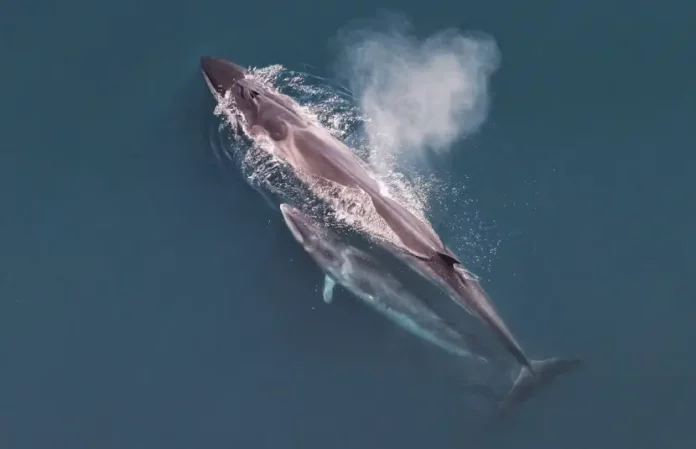
Giant Blue-Grey Sei Whales Return To Argentina After 100 Years: For the first time in over a century, sei whales have made a remarkable reappearance in the marine areas near Argentina’s Patagonian coast. This event marks a significant milestone in marine conservation, symbolizing a rebound after years of alarming decline due to historical whaling activities.
A History of Struggle
During the 1920s and 1930s, sei whales faced intense hunting pressure, particularly from whaling operations in and around Argentine waters. These activities drastically reduced their numbers, nearly driving them to extinction in the region. The species became increasingly rare as it was relentlessly hunted, and sightings became a rarity.
Efforts Towards Recovery
In response to the critical decline of many whale species, including the sei whale, international measures were implemented to protect these ocean giants. A global ban on commercial whaling played a pivotal role in their gradual recovery. Decades of protected status allowed sei whale populations to slowly increase, paving the way for their return to former habitats.
Understanding Sei Whales
Sei whales, scientifically known as “Balaenoptera borealis,” are the third largest rorqual after blue and fin whales. They are characterized by their streamlined bodies, usually bluish-grey, with tall, curved dorsal fins and small, pointed flippers. These whales can grow up to 62-66 feet in length and weigh between 28-45 metric tons. Their diet mainly consists of small fish and plankton, which they filter from the water using their baleen plates.
Recent Observations and Research
The recent reappearance of sei whales has been closely monitored by researchers, notably those from Argentina’s CONICET scientific agency, led by biologist Mariano Coscarella. Utilizing advanced technologies like satellite trackers and aerial drones, the team has collected crucial data on the migration patterns and behaviors of these whales. This project, supported by National Geographic’s Pristine Seas project, aims to provide insights into the success of conservation efforts and strengthen future endeavors to protect sei whales and other marine species.
The Journey of Sei Whales
Sei whales prefer deep offshore waters and are usually found solitary or in small groups. They migrate seasonally between cold polar and warm temperate seas, with impressive swimming speeds of up to 50 km/h. Despite their resilience, sei whales remain under threat from ship strikes and entanglement in fishing gear, highlighting the ongoing need for conservation efforts.
Conclusion
The return of sei whales to Argentine waters after a century is a testament to the power of conservation efforts. Through global initiatives and dedicated research, these majestic creatures are reclaiming their place in the ocean ecosystem. As we continue to protect and preserve their habitats, we ensure a brighter future not only for sei whales but for marine biodiversity as a whole.
Stay updated with the latest current affairs and insightful blog posts by following Freshersnow. Don’t miss out on future content that keeps you informed and engaged!
| You Can Also Check | |
| Current Affairs | |



